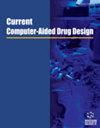A Reverse Structure-Based Design of HPV E7 Inhibitor.
IF 1.6
4区 医学
Q4 CHEMISTRY, MEDICINAL
引用次数: 0
Abstract
BACKGROUND Human papillomavirus (HPV) is a small, non-enveloped double-stranded circular DNA virus. The high-risk types of HPV are claimed to be responsible for over 99% of cervical cancers. One of the essential HPV oncoproteins, E7, is responsible for the escape from G1/S cell cycle arrest in HPV infected cells by binding to the retinoblastoma protein (pRb) through its LXCXE binding site. OBJECTIVES To design a peptide inhibitor targeting HPV E7 through an in silico approach. METHODS In this study, the LXCXE binding domain of pRb is used as a target to design peptide inhibitors using a reverse structure-based approach. The designed amino acid sequence from the B pocket of pRb, named peptide Y, was then further investigated in the in vitro analysis. The cytotoxicity of the peptide was analysed in two cell lines, namely, CaSki, containing an integrated HPV16 genome and HaCaT, an immortalized keratinocyte cell. Cell cycle analysis was also carried out in both cell lines treated with peptide. RESULTS Through in silico approach, a 9-amino acids peptide sequence which formed 4 conventional hydrogen bonds with LXCXE motif was selected for in vitro assay. Based on the cytotoxicity analysis, the peptide showed low toxicity in both cell lines where the cell viability remained over 74% when treated with peptide Y. The peptide also caused an accumulation of cells in G0/G1 (+5.4%) and S phase (+10.2%), and reduction of cells in G2/M phase (-14.9%) in the CaSki cells with no significant effect on normal cells, indicating it is a potential HPV inhibitor. CONCLUSION A peptide inhibitor, peptide Y, that was designed from the LXCXE binding motif in pRb is able to inhibit HPV E7 by causing a cell accumulation effect in G0/G1 and S phases of cell cycle in the HPV transformed cell lines. These findings could contribute as a lead of HPV E7 peptide inhibitor in the future.基于反向结构的HPV E7抑制剂设计
人乳头瘤病毒(HPV)是一种小的、无包膜的双链环状DNA病毒。据称,99%以上的宫颈癌是由高危型HPV引起的。其中一种重要的HPV癌蛋白E7通过其LXCXE结合位点与视网膜母细胞瘤蛋白(pRb)结合,负责在HPV感染细胞中逃脱G1/S细胞周期阻滞。目的通过芯片法设计一种靶向HPV E7的肽抑制剂。方法本研究以pRb的LXCXE结合域为靶点,采用基于反向结构的方法设计肽抑制剂。从pRb的B口袋中设计的氨基酸序列命名为肽Y,然后在体外分析中进一步研究。在两种细胞系中分析了该肽的细胞毒性,即CaSki(含有整合的HPV16基因组)和HaCaT(永活的角质形成细胞)。细胞周期分析也进行了两个细胞系的肽处理。结果通过硅片法,选择了与LXCXE基序形成4个常规氢键的9个氨基酸的肽序列进行体外检测。细胞毒性分析显示,该肽对两种细胞系的毒性均较低,经y肽处理后,细胞活力均保持在74%以上。该肽还能引起CaSki细胞G0/G1期(+5.4%)和S期(+10.2%)细胞的积累,G2/M期细胞的减少(-14.9%),对正常细胞无显著影响,表明其是一种潜在的HPV抑制剂。结论利用pRb中LXCXE结合基序设计的肽抑制剂肽Y可在HPV转化细胞系的细胞周期的G0/G1和S期引起细胞积累效应,从而抑制HPV E7。这些发现可以作为未来HPV E7肽抑制剂的线索。
本文章由计算机程序翻译,如有差异,请以英文原文为准。
求助全文
约1分钟内获得全文
求助全文
来源期刊

Current computer-aided drug design
医学-计算机:跨学科应用
CiteScore
3.70
自引率
5.90%
发文量
46
审稿时长
>12 weeks
期刊介绍:
Aims & Scope
Current Computer-Aided Drug Design aims to publish all the latest developments in drug design based on computational techniques. The field of computer-aided drug design has had extensive impact in the area of drug design.
Current Computer-Aided Drug Design is an essential journal for all medicinal chemists who wish to be kept informed and up-to-date with all the latest and important developments in computer-aided methodologies and their applications in drug discovery. Each issue contains a series of timely, in-depth reviews, original research articles and letter articles written by leaders in the field, covering a range of computational techniques for drug design, screening, ADME studies, theoretical chemistry; computational chemistry; computer and molecular graphics; molecular modeling; protein engineering; drug design; expert systems; general structure-property relationships; molecular dynamics; chemical database development and usage etc., providing excellent rationales for drug development.
 求助内容:
求助内容: 应助结果提醒方式:
应助结果提醒方式:


